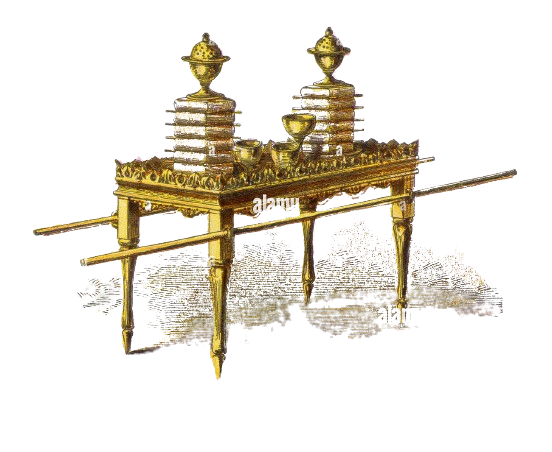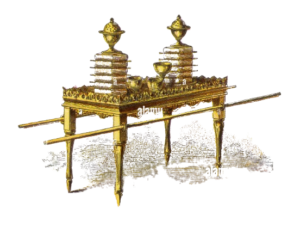
23 Feb Terumah; Jewish Wisdom and the Significance of Bread- Chassidut and Kabbalah
 Aura Of Torah.com
Aura Of Torah.com
Terumah; Jewish Wisdom and the Significance of Bread;
Chassidut and Kabbalah
Inspired by the teachings of HaRav Yitzchak Ginsburgh and Rabbi Moshe Genuth
Over many centuries some of our teachings were ‘set aside’ for various reason. This may be attributed to hardship and oppression (pogroms) especially in the Ashkenazi world where survival took precedence over more spiritual Torah pursuits. The preserving of ‘academic ‘ or ‘intellectual’ learning of Torah was the primary focus .It was the Chassidic Movement that re-ignited the joy, emotive experiences , philosophical and Kabbalistic insight (Kabbalah; to receive, to correspond, to connect) to unite with the intellectual aspects of Torah.
“On the table, the showbread should be placed before Me at all times.” 1 exodus 25.30-Terumah
“On the table was the Show Bread, which was unleavened. Bread is symbolic of our livelihood. Unleavened flat bread symbolizes humility, recognizing that our wealth is from G‑d and not arrogantly thinking that it is our personal accomplishment. The bread’s ends faced each other, symbolizing love for your fellow man. The fact that it is one loaf shows that we are essentially one at our core.
Taking challah ( although we may often refer to the actual bread as challah, challlah is technically the taking from the dough of a small portion or ‘kezayis’ of dough as a ‘offering’ equal to an average olive or 1/2 an egg) tells us that whatever we are given is not for our use alone. If we have wisdom, money or good health, our first step is to put them towards a Divine purpose. The showbread was a perpetual reminder of G d’s generosity, and the channel for abundance and prosperity.” (Chabad)
The Showbreads were replaced fresh each 7 days on Shabbat afternoon (Mincha) as the old loaves on the table were consumed by the Kohanim (priests). Of great significance, the loaves remained fresh and hot even though it was left out for a whole week.
Although we don’t have the connection and atonement that existed during tabernacle and Temple times, we do have insights and merit of challah, bread and wheat.
Jewish wisdom teaches that everything begins first in the spiritual realm. The most lofty realm is referred to as ‘Ein Sof’ (a single infinite light). As this (all too powerful) infinite light descends it passes through a contraction (tsimtsum) to form the 10 emanations know as the Sefirot, the 10 powers or building blocks of creation. This is where have heard the phrase ‘G-d spoke 10 utterances (the 10 sefirot/emanations) and with this the world was created’.
BREAD…
There are 4 types of ‘fruits’ that are spoken about that may have been taken from the Garden of Eden regarding the sin of Adam and Eve and eating the fruit of the Tree of Knowledge; grape, etrog, fig and wheat (wheat is stated in Gan Eden to be as a tree with the grain as its fruit-‘Rabbah’). When we say Kiddush we say it over wine (grape) and Motzi over bread (we refer today commonly as challah). When we mindfully recite blessings we are engaging in the process of rectification by igniting the spiritual sparks within the food to be consumed, integrated into ourselves, and elevated. The purpose of saying blessings over these ‘fruits’ is to bring an elevation to ourselves, creation and a rectification to the sin of Adam and Eve.
Melacha (categories of prohibitive work on Shabbos or Yom Tov that relate to the building of the Mishkan)
10’s in Torah are considered ‘complete’. We find 10’s abundantly throughout the Torah. There are 39 Melacha or ‘prohibitions of work’ that relate to Shabbos and Yom Tov. We do not make breads/challah on Shabbos but prepare it in advance. There are 10 Melacha’s (categories of prohibitions of work) specific to the making of bread that address the making of challah and bread. When we make the motzi, we place all 10 fingers on the 2 loaves as a conduit for powers of the 10 sefirot to ignite and begin the process of elevating the sparks of holiness to then be consumed.
The physical world is a reflection of the spiritual realms. According to Kabbalah, Torah is likened to Wisdom and wheat is also likened to wisdom and so bread is likened to Torah. Once we have made the blessing over the bread/challah , and we have ignited the sparks of Torah wisdom contained within the bread that will then be most easily integrated into our body.
Salt
We dip the bread into salt. This is similar to how we kasher kosher meat where we draw out the blood or ‘life force or sweetness’ of the animal with salt. As it relates to our blessing and consumption of bread, we are drawing out the life force or ‘sweetness’ of the Torah wisdom contained within in preparation of eating and integrating the sparks of spiritual holiness.
|
Leib Getzel (Lawrence) Lax
Addictions and Counseling
lawrencelax.com (
lawrenceJlax@gmail.com